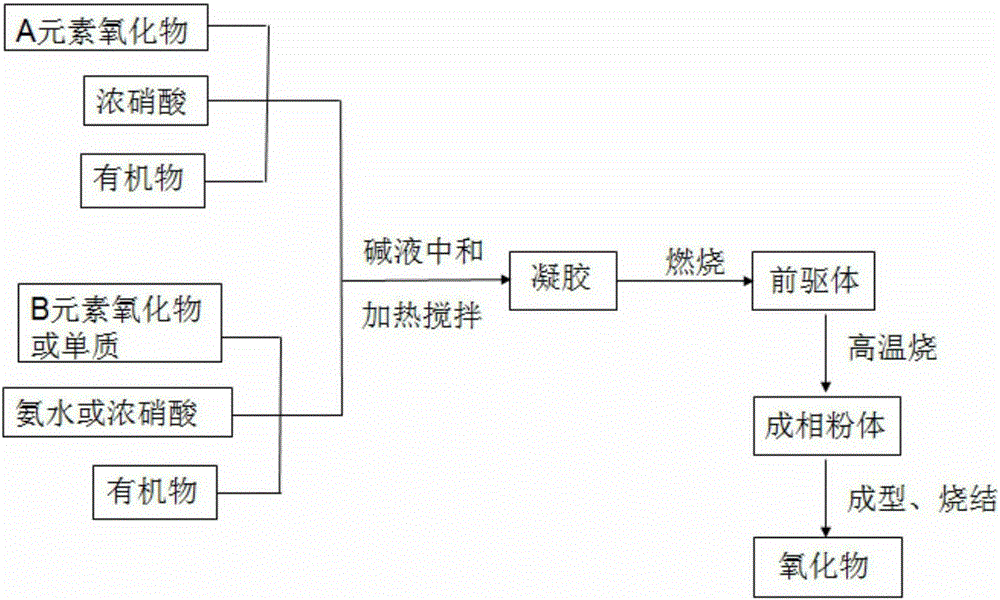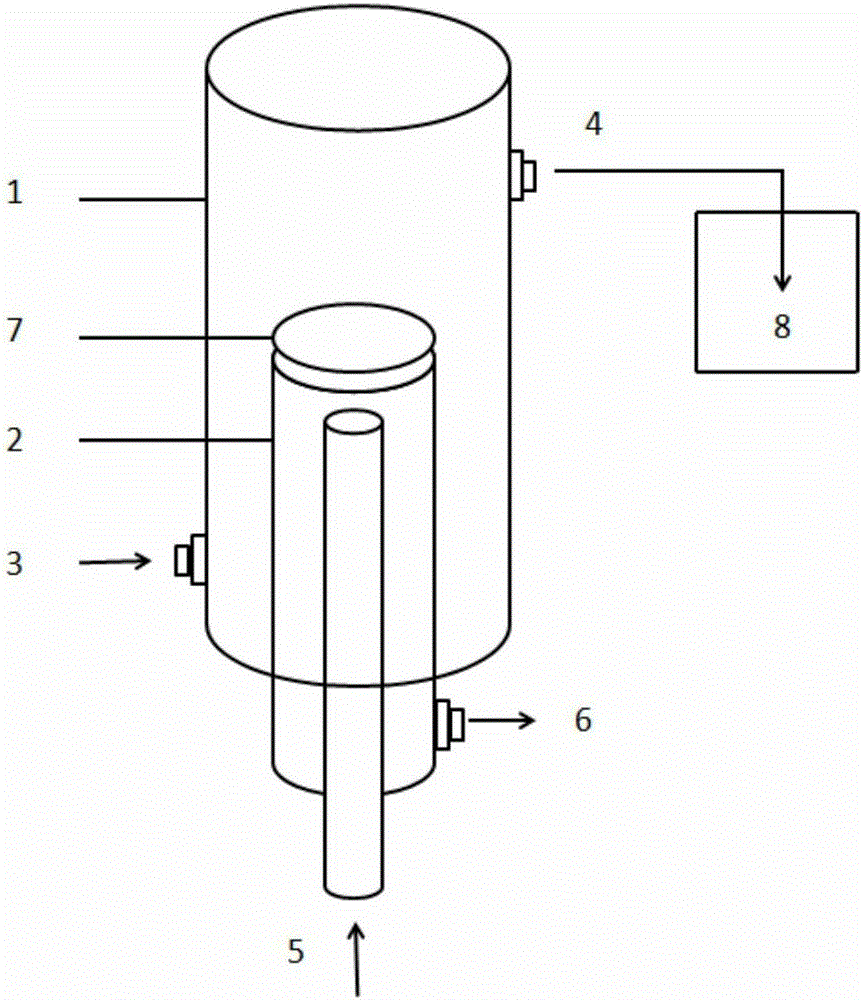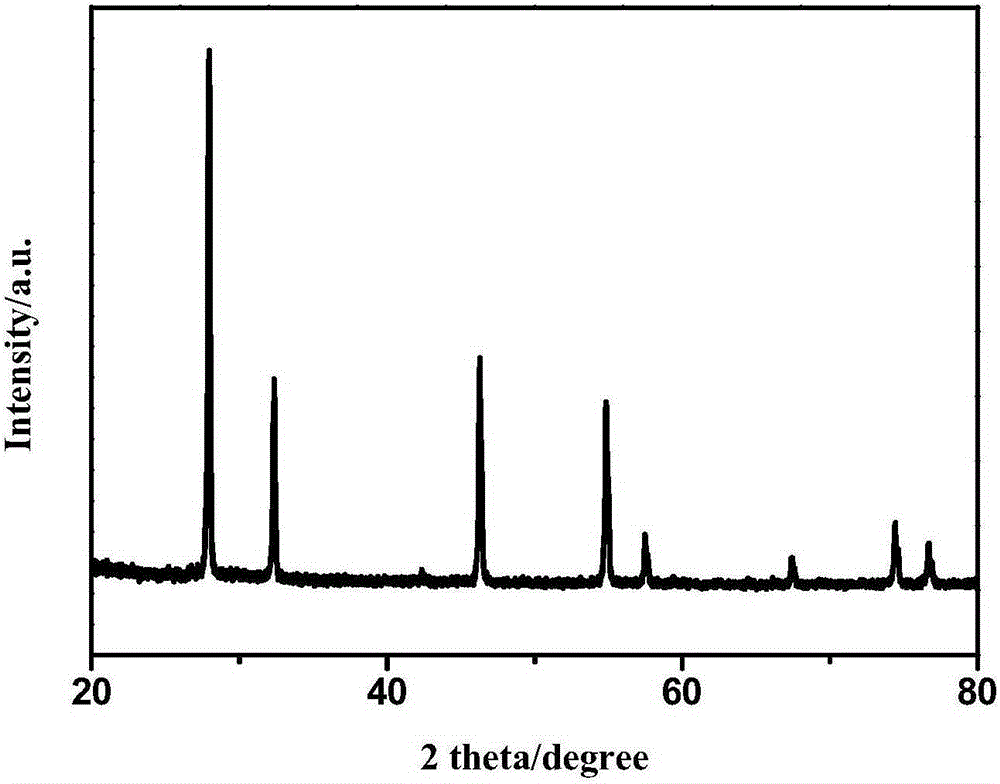Preparation and measuring method of mixed conductor ceramic membrane used for H2S decomposition
A hybrid conductor, ceramic membrane technology, applied in the direction of material analysis using radiation diffraction, can solve problems such as inability to operate for a long time, and achieve the effects of improved decomposition rate, low material cost, and excellent hydrogen permeability
- Summary
- Abstract
- Description
- Claims
- Application Information
AI Technical Summary
Problems solved by technology
Method used
Image
Examples
Embodiment 1
[0034] (1) Add 7.93gLa 2 o 3 Dissolved in concentrated nitric acid, 2.054gWO 3 Dissolve in ammonia water to obtain a solution, and then add citric acid for complexation, wherein the number of moles of metal ions in each solution: the number of moles of citric acid = 1:2, and add ammonia water to adjust the pH to neutral, and mix the solutions. Heat and stir at 120°C for 48 hours until a viscous gel remains, heat in an electric furnace and burn it to obtain the precursor of the powder. Put the precursor of this powder into a muffle furnace to raise the temperature to 900°C at a rate of 2°C / min, keep it for 10 hours, and then lower it to room temperature at a rate of 2°C / min to obtain the phase-formed powder of the material body shape.
[0035](2) Put the powder of this material in a mortar and grind it evenly, then weigh about 1.0g of the powder, put it in a stainless steel abrasive tool with an inner diameter of 16mm, and keep it under the pressure of 20MPa for 10min to obt...
Embodiment 2
[0041] (1) 8.2545gLa 2 o 3 and 0.3431gRe were dissolved in concentrated nitric acid, 1.7087gWO 3 Dissolve in ammonia water, and then add citric acid respectively, wherein the number of moles of metal ions in each solution: the number of moles of citric acid = 1:2, and add ammonia water to adjust the pH to neutral, and mix the solutions. Heat and stir at 120°C for 48 hours until a viscous gel remains, heat in an electric furnace and burn it to obtain the precursor of the powder. Put the precursor of this powder into a muffle furnace and raise the temperature to 900°C at a rate of 2°C / min, keep it for 10 hours, and then lower it to room temperature at a rate of 2°C / min to obtain the powder form of the material .
[0042] (2) Put the powder of this material in a mortar and grind it evenly, then weigh about 1.0g of the powder, put it in a stainless steel abrasive tool with an inner diameter of 16mm, and keep it under the pressure of 20MPa for 10min to obtain a powder membrane ...
Embodiment 3
[0049] (1) Add 14.9972gNd 2 o 3 Dissolved in concentrated nitric acid, 1.3154gWO 3 and 1.1668gMoO 3 Dissolve them in ammonia water respectively, and then add citric acid respectively, wherein the number of moles of metal ions in each solution: the number of moles of citric acid = 1:2, and add ammonia water to adjust the pH to neutral, and mix the solutions. Heat and stir at 120°C for 48 hours until a viscous gel remains, heat in an electric furnace and burn it to obtain the precursor of the powder. Put the powder into a muffle furnace to raise the temperature to 900°C at a rate of 2°C / min, keep it for 10 hours, and then lower it to room temperature at a rate of 2°C / min to obtain the powder form of the material.
[0050] (2) Put the powder of this material in a mortar and grind it evenly, then weigh about 1g of the powder, put it in a stainless steel abrasive tool with an inner diameter of 16mm, and keep it under the pressure of 20MPa for 10min to obtain a raw powder membran...
PUM
 Login to View More
Login to View More Abstract
Description
Claims
Application Information
 Login to View More
Login to View More - R&D
- Intellectual Property
- Life Sciences
- Materials
- Tech Scout
- Unparalleled Data Quality
- Higher Quality Content
- 60% Fewer Hallucinations
Browse by: Latest US Patents, China's latest patents, Technical Efficacy Thesaurus, Application Domain, Technology Topic, Popular Technical Reports.
© 2025 PatSnap. All rights reserved.Legal|Privacy policy|Modern Slavery Act Transparency Statement|Sitemap|About US| Contact US: help@patsnap.com



